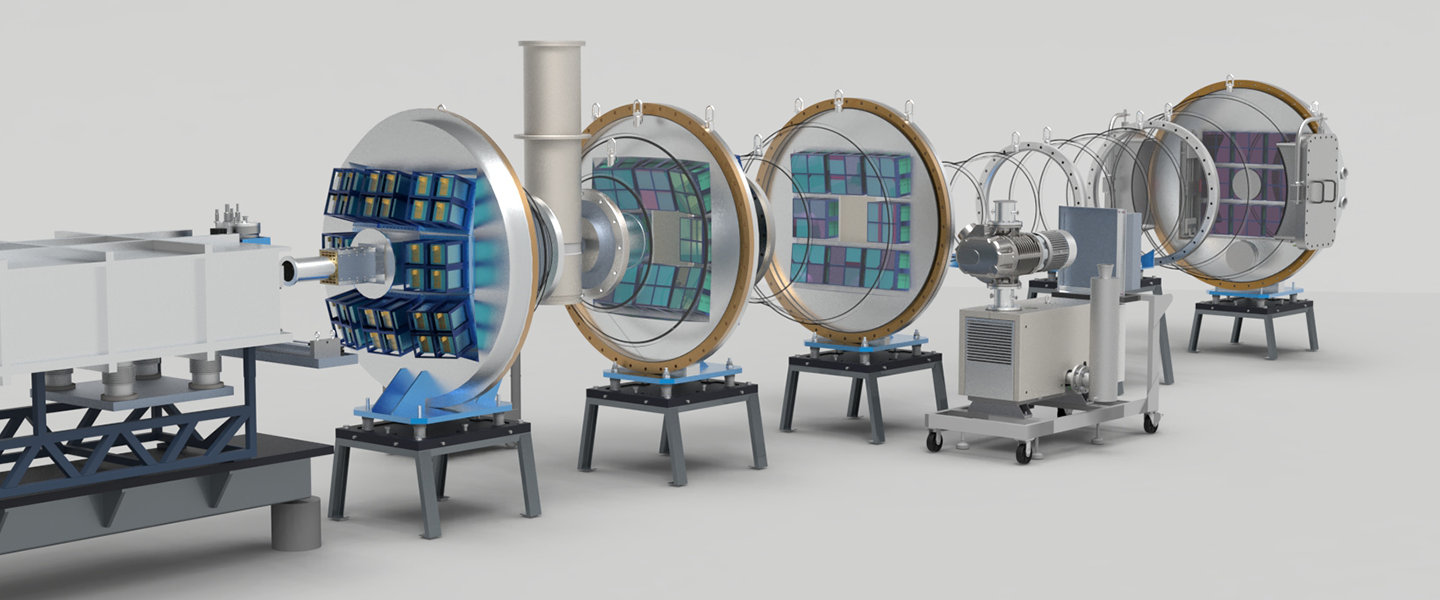Contacts
-
Instrument Scientist

CENTAUR will be a small- and wide-angle neutron scattering (SANS/WANS) instrument with diffraction and spectroscopic capabilities to simultaneously probe time-resolved atomic- to meso-scale structures in hierarchical systems under in situ or in operando conditions. Simultaneous SANS/WANS and diffraction capabilities will be a unique capability among neutron scattering instruments in the United States.
Its direct geometry spectrometer mode will extend inelastic measurements to low scattering angles and provide a unique capability for inelastic SANS studies.
The instrument will provide much needed capabilities in soft matter and polymer sciences, geology, biology, quantum condensed matter, and other materials sciences that need in situ and in operando experiments for kinetic and/or out-of-equilibrium studies. Beam polarization and a high-resolution chopper will enable detailed structural and dynamical investigations of magnetic and quantum materials. The instrument’s excellent resolution will make it ideal for low-angle diffraction studies of highly ordered large-scale structures, such as skyrmions, shear-induced ordering in colloids, and biomembranes.
Soft Matter
Examples include polymers, colloids, micelles, complex fluids, gels and blends, and microemulsions
Material Sciences
Additive manufacturing, metallurgical alloys, advanced composites, and porous materials
Geosciences
Soils and Earth formation rocks; planetary and meteorite geoscience
Biological Systems
Biomacromolecules such as proteins, RNA/DNA, lipids and multi-component biomembranes; intrinsically disordered proteins (IDPs) and regions (IDRs), liquid-liquid phase separations, and biopharmaceuticals
Quantum Condensed Matter
Spin texture, skyrmion, vortex lattices, Brillouin scattering, and magnetic domains
| Sample size | Typical radius 1–5 mm, other shapes possible with different apertures (e.g., 4×8 mm2 or smaller); minimum static solution sample in volume ~100 µL;); minimum beam size 1×1 mm2 for scanning imaging or tomography | |
| Q range | Maximum dynamic range 0.001–20 Å-1 simultaneously. Variable Q range with different flux/divergence settings. Examples:
|
|
| Detector coverage | Covers the whole Q range simultaneously without repositioning | |
| Wavelength bandwidth | 7.4 Å (15 Hz), 14.8 Å (7.5 Hz) | |
| Q resolution |
Forward detectors (small- and wide-angle): < 10% |
|
| Time resolution | >1 second (with moderate scattering samples; integrated flux on sample up to 7.6E8 n/s/cm2 with the shortest collimation setting) | |
| Additional capability |
Inelastic SANS spectrometer (incident energy Ei: 0.5-500 meV) |
|
“Conceptual Polarization Setup at CENTAUR, the SANS/WANS Instrument at the Second Target Station of SNS”. S Qian, C Jiang, F Li, A Khaplanov, Journal of Physics: Conference Series 2481 (1), 012002
"CENTAUR—The small-and wide-angle neutron scattering diffractometer/spectrometer for the Second Target Station of the Spallation Neutron Source". Shuo Qian, William Heller, Wei-Ren Chen, Andrew Christianson, Changwoo Do, Yangyang Wang, Jiao YY Lin, Thomas Huegle, Chenyang Jiang, Cristina Boone, Cameron Hart, Van Graves, Review of Scientific Instruments 93 (7), 075104
"Optimization of neutron chopper and optics for CENTAUR, the SANS/WANS diffractometer at the spallation neutron source second target station". C. Boone, F. Ye, Y. Zhang, Nuclear Insttrument and Methods in Physics Research. Section A: Accelerators, Spectrometers, Detectors and Associated Equipment 1063, 169253
SECOND TARGET STATION (STS) PROJECT CENTAUR Technical Report, S Qian, C Boone, Oak Ridge National Lab.(ORNL), Oak Ridge, TN (United States)
Instrument Scientist
Oak Ridge National Laboratory is managed by UT-Battelle LLC for the US Department of Energy